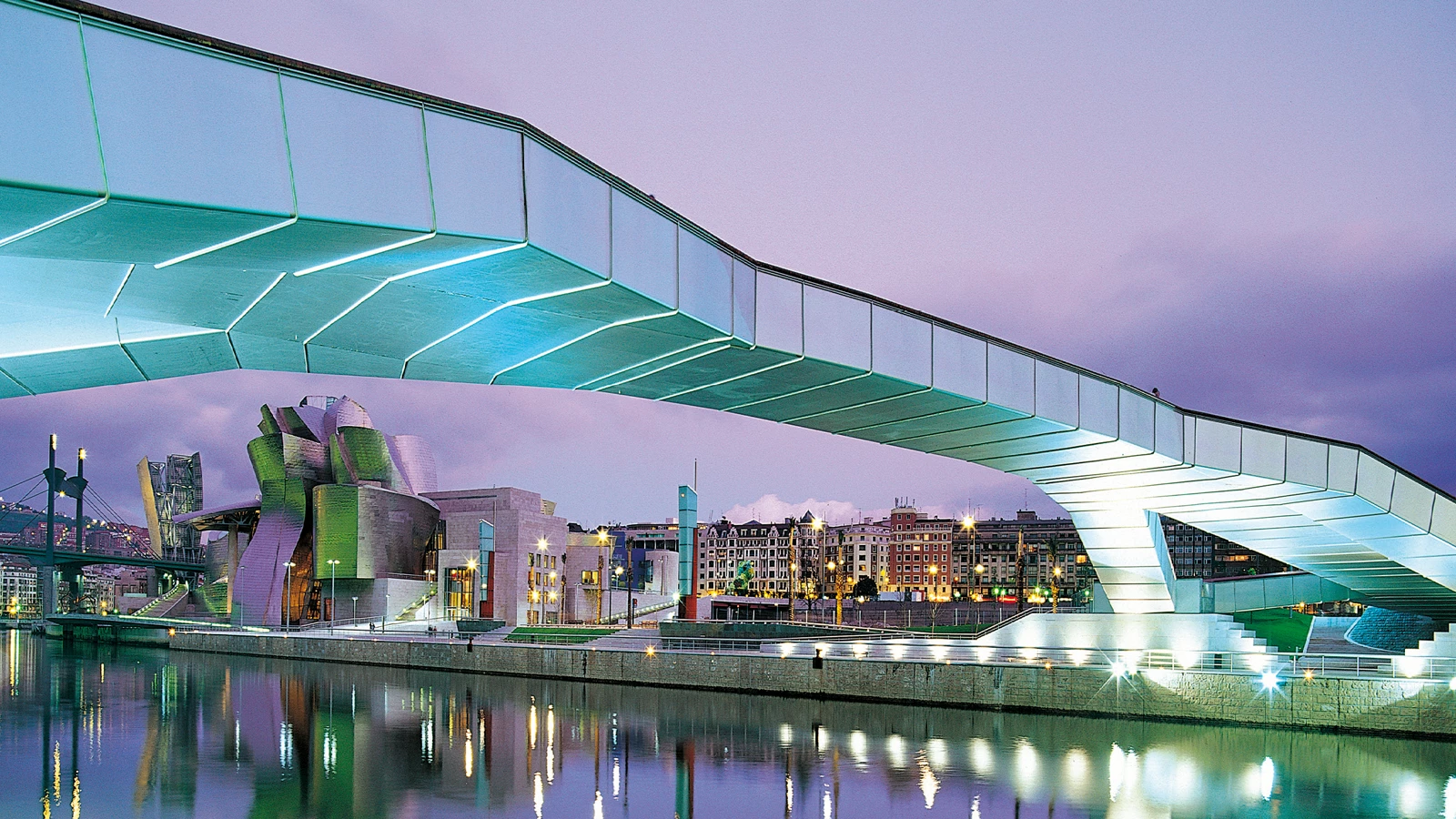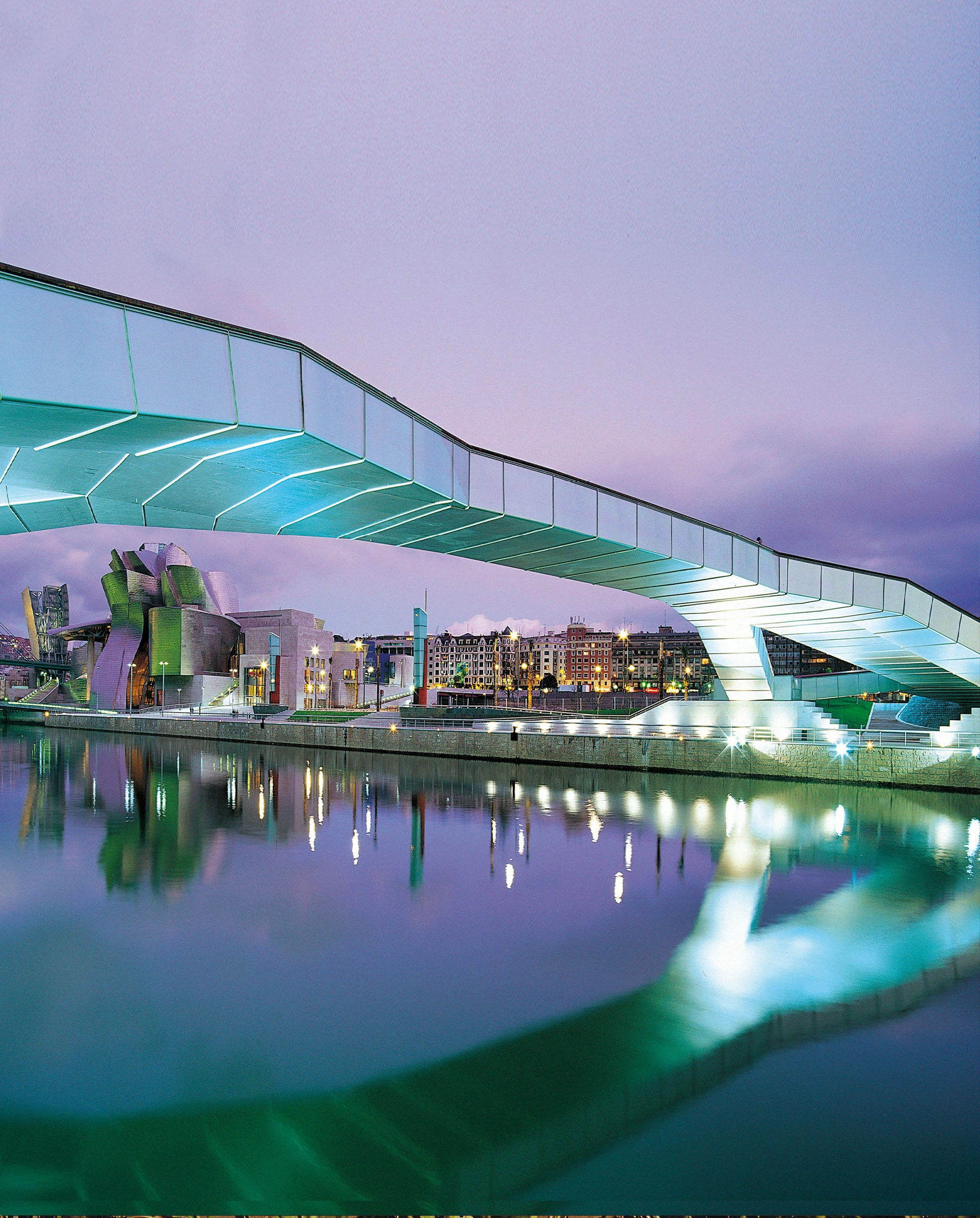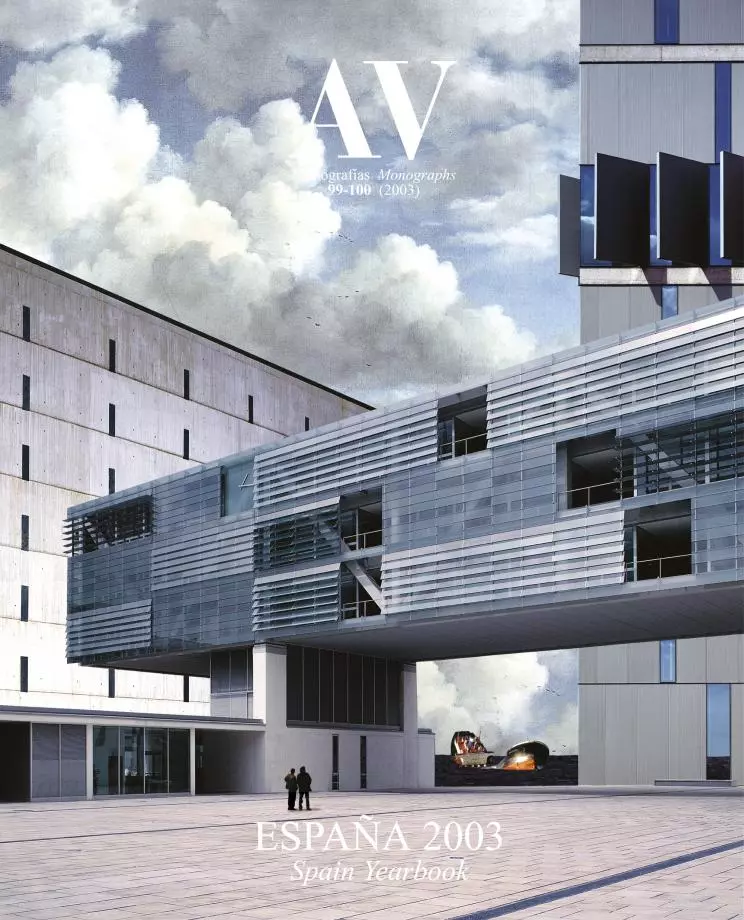Footbridge in Abandoibarra, Bilbao
Lorenzo Fernández-Ordóñez Francisco Millanes- Type Bridge / footbridge Prefabrication Infraestructure
- Material Steel
- Date 2002
- City Bilbao
- Country Spain
- Photograph Javier Azurmendi Agustín Sagasti

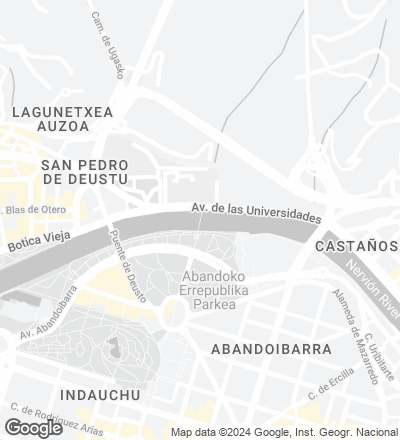
Bilbao ría 2000 ha cumplido su décimo aniversario. Creada con participación de las administraciones estatal, autónoma y local para recuperar con otros usos los enclaves de la capital vizcaína y Baracaldo obsoletos tras la reconversión industrial, esta sociedad ha abordado proyectos de rehabilitación y construcción de infraestructuras urbanas. A este último capítulo pertenece la pasarela Pedro Arrupe de Abandoibarra, integrada en un conjunto de proyectos que, junto con el Museo Guggenheim y el Palacio Euskalduna, otorgan un nuevo protagonismo a la ribera del Nervión.
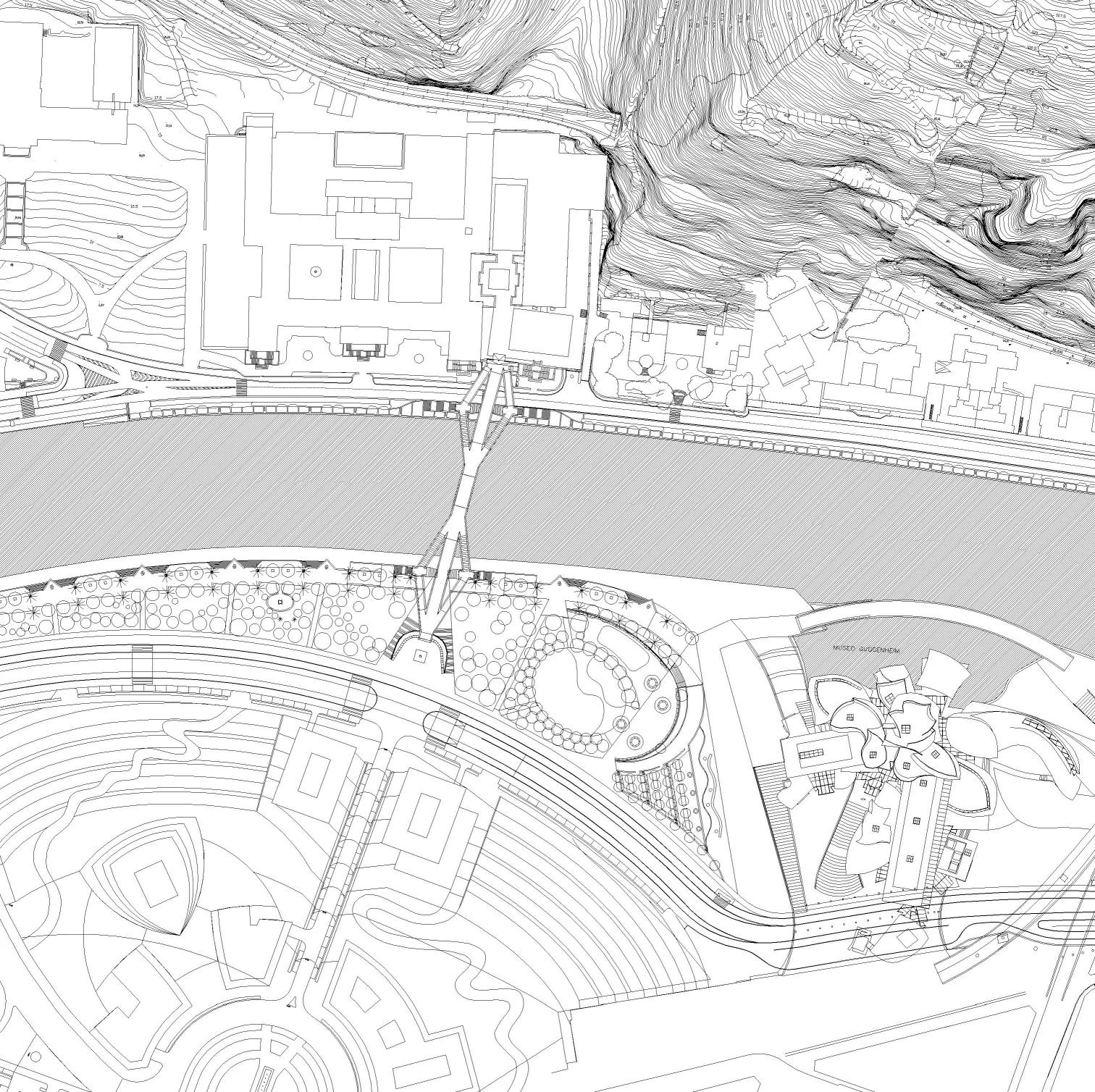
The project had to fulfill two objectives: not to pass unnoticed in a landscape with such important presences as the Guggenheim Museum, and to effectively solve pedestrian itineraries located at different levels.
According to the guidelines of the competition – called in 1995 –, the footbridge had to connect the riverside promenades, on the lower level, and also the University of Deusto and Abandoibarra square, on the upper level. The search for a continuous element that could solve the tensions of the site – with the strong architectural imprint of the museum and the palace – and the circulations at different heights led to a single-span solution with six supports at different height, formed by a structural sheet of constant thickness and with two different skins, one of stainless steel and one of wood, that folds as origami to form the pads and the ramps.
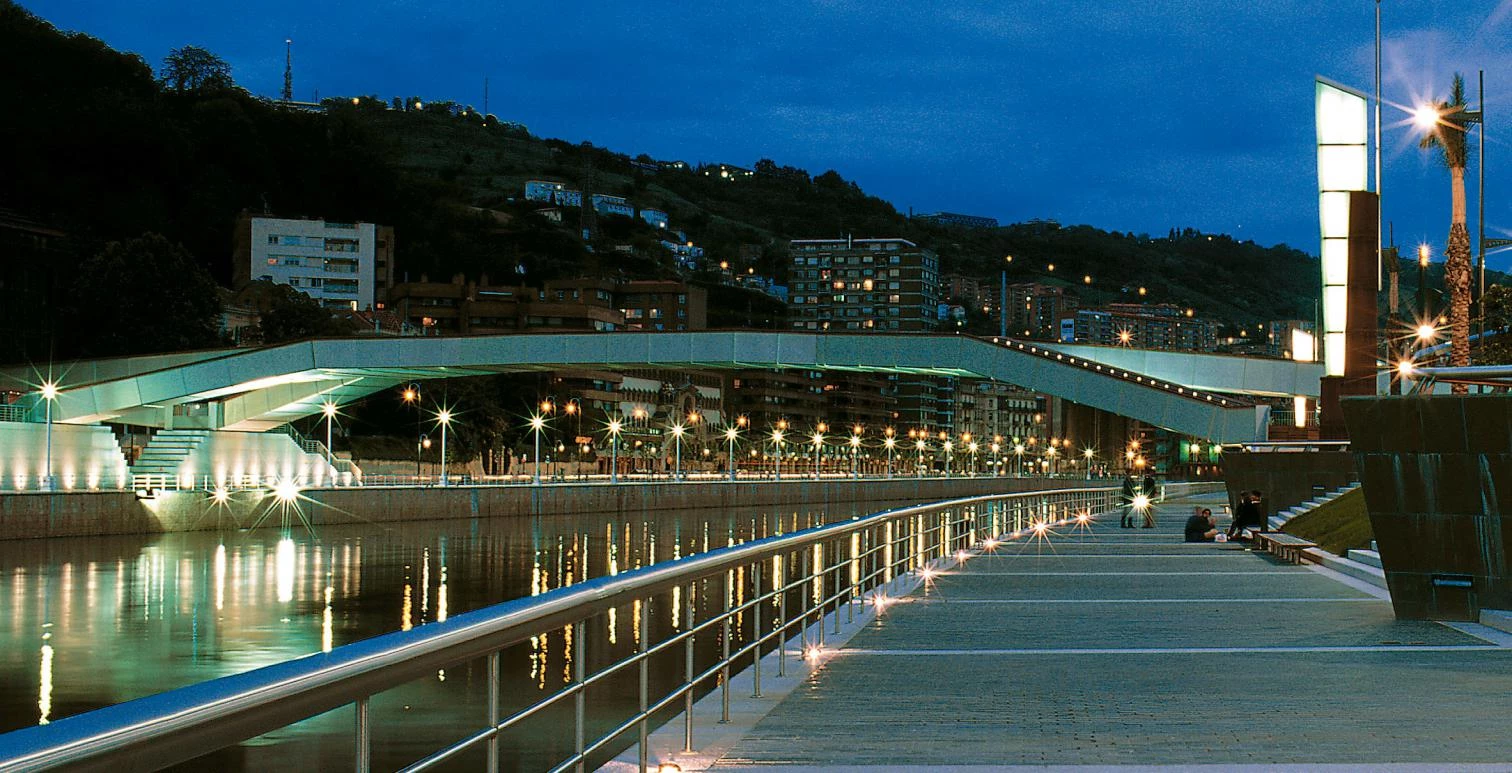
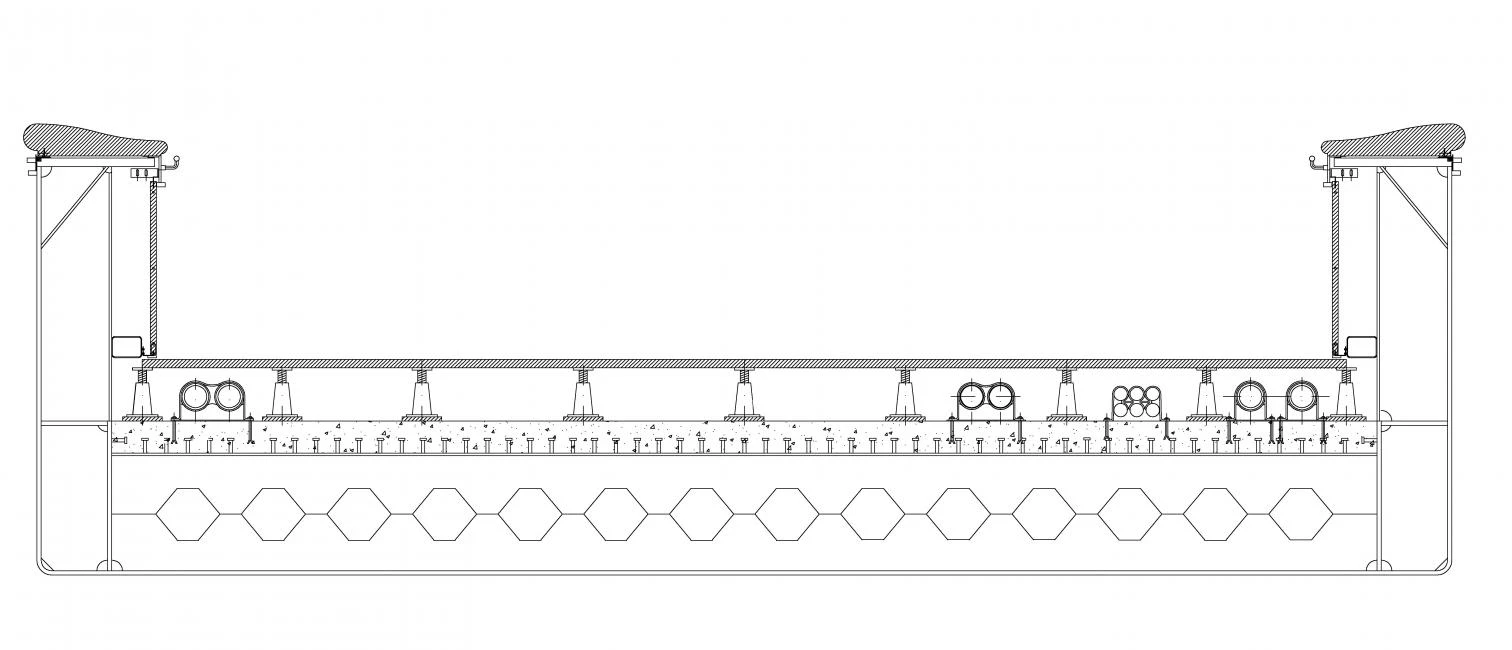
Folding like origami, a sheet of steel solves the different itineraries in one single gesture and gives way to a zoomorphic structure whose stainless exterior cladding makes it shine brightly over the river waters.
The exterior metallic skin is made of a series of prefabricated 20 mm thick steel sheets that are welded to one another and take on the load-bearing function of the footbridge. The welding joint is concealed below a steel overhang to produce a continuous skin effect. The interior of the footbridge, that is over six meters on its widest part, is clad in thin lapacho wood strips, giving it a warm appearance to contrast with the cold exterior steel enclosure. Sealing the encounter of both skins, thick wood boards act as sills of the side parapets of each stretch of the footbridge, and also as banisters and support. The structure within this double shell is made of a series of perforated steel ribs that distribute the load while allowing for the installations to run through their honeycomb holes.
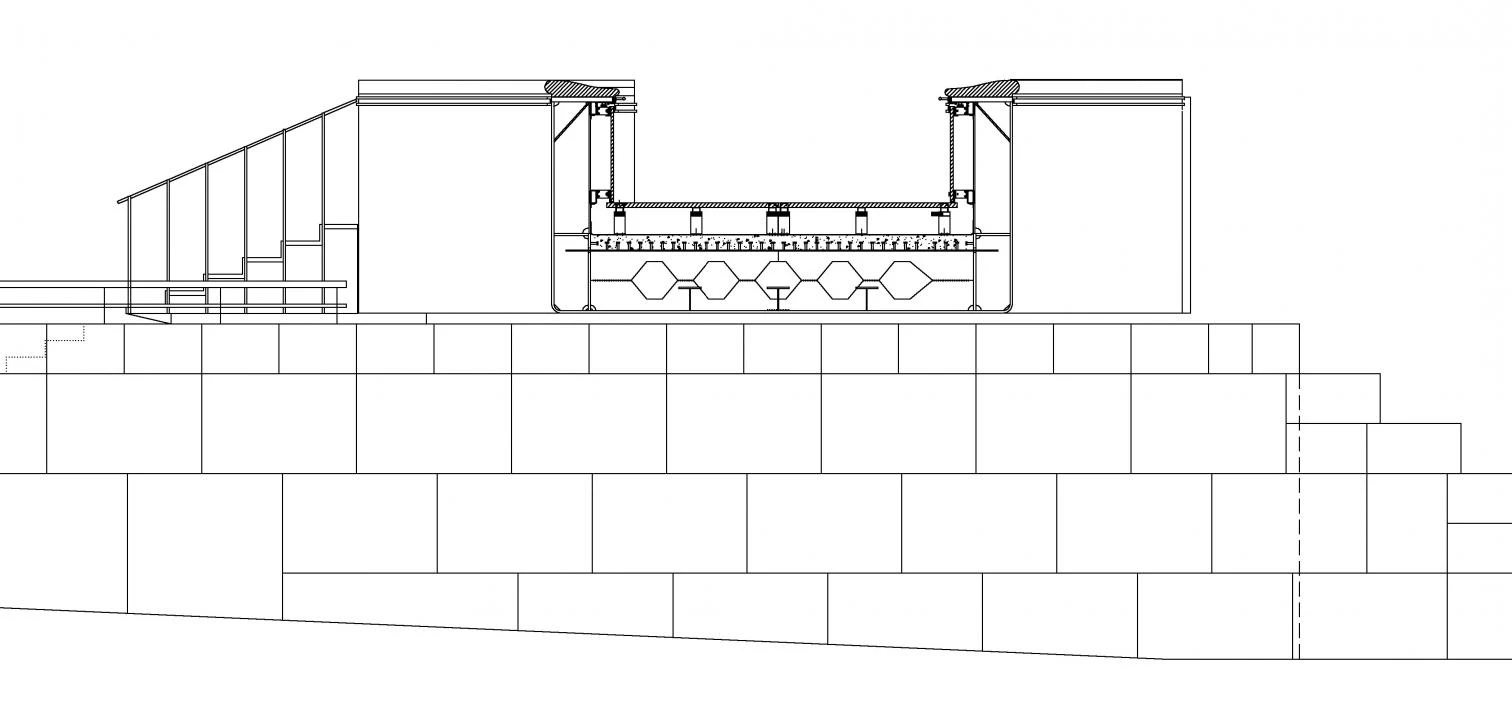

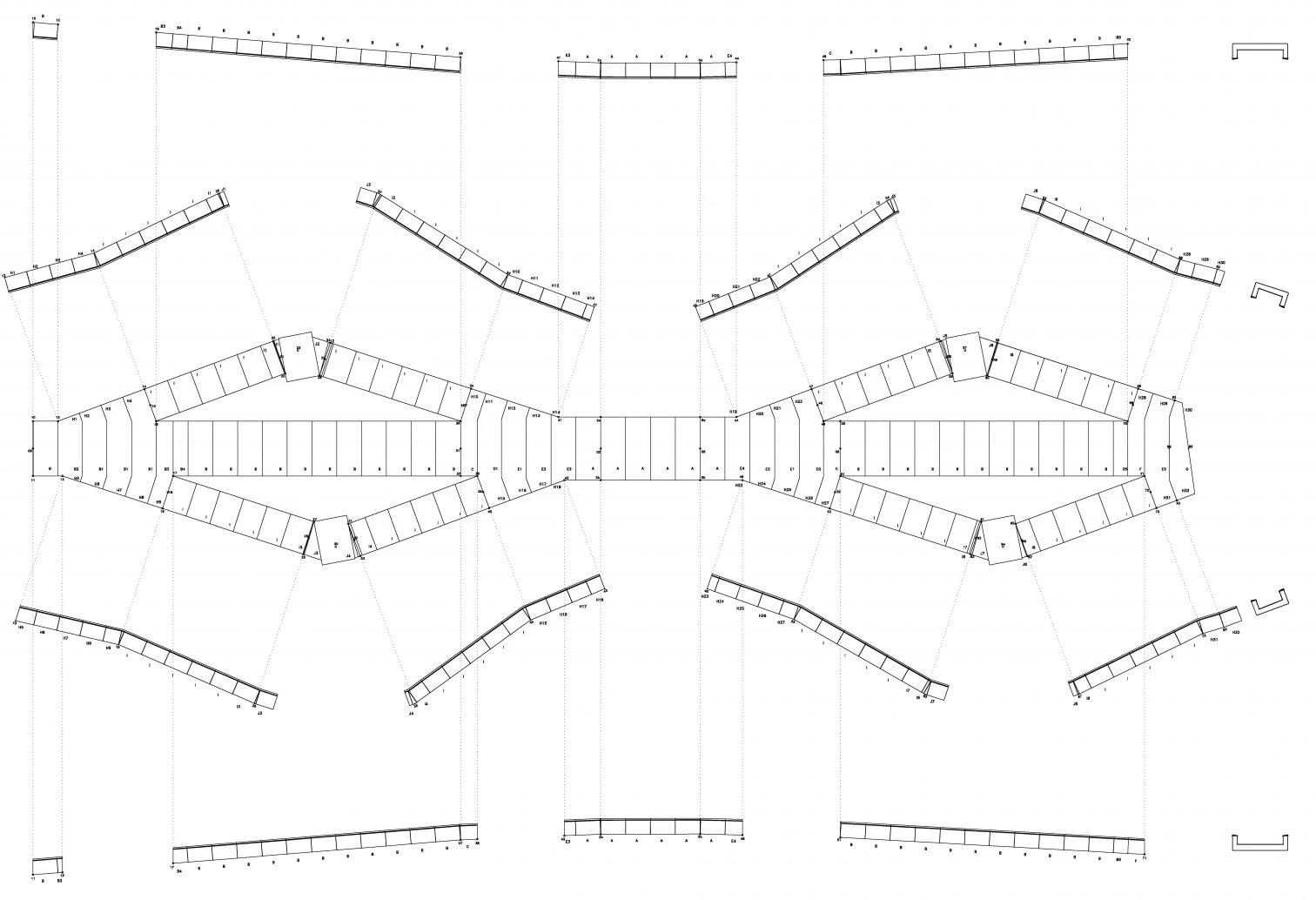
Raised on ramps and stone steps, the folded metallic piece looks like a dragonfly alighting on the dark mirror of the waters. A sculpture by Eduardo Chillida, made of Cor-Ten steel and entitled Begirari IV (The Watchtower), is a vertical contrast to the footbridge on its arrival at the Abandoibarra platform. Neither the engineer Fernández Ordoñez nor the Basque artist, friends and collaborators, saw their works completed.


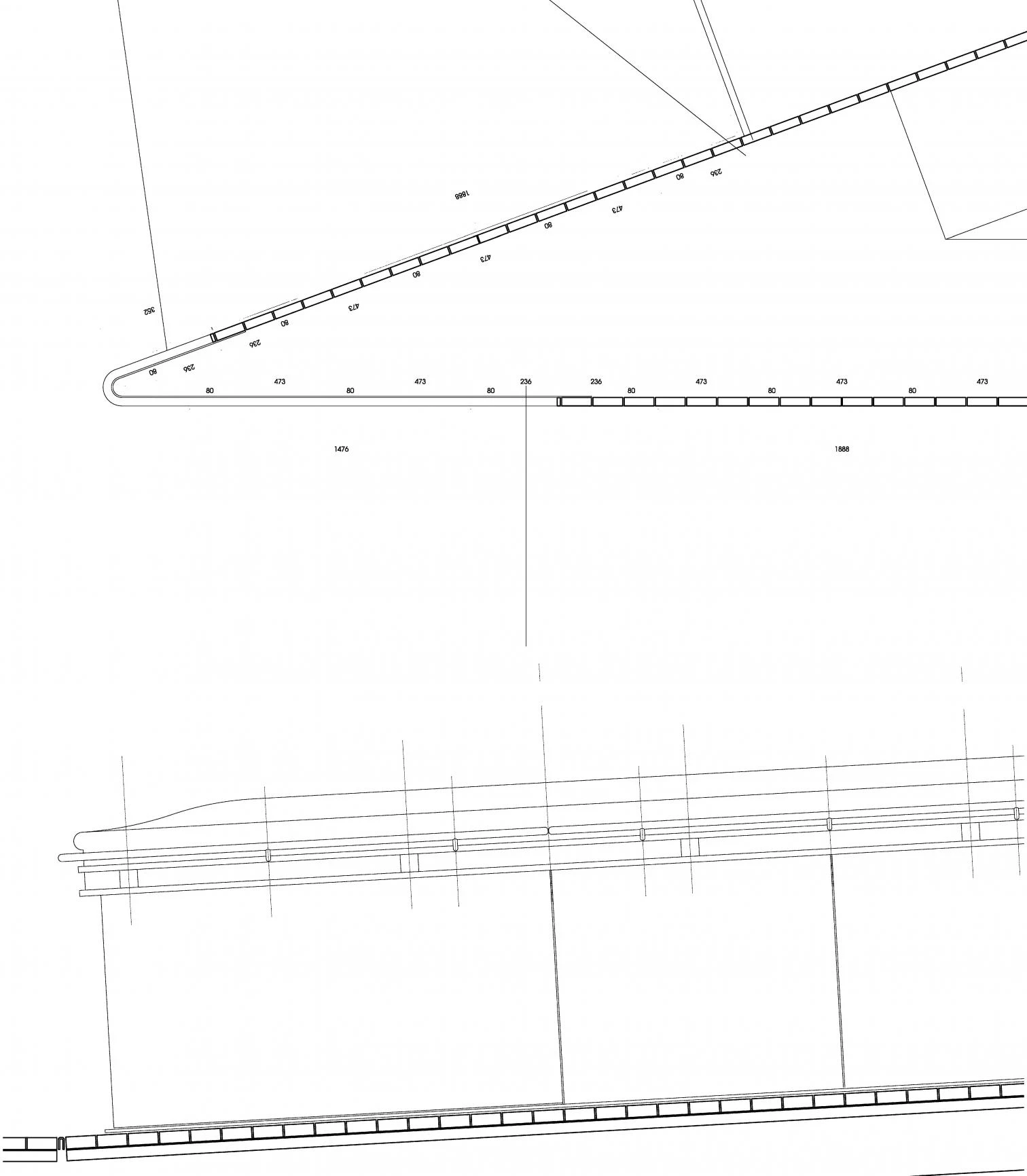
The interior of the footbridge, that measures over six meters on its widest stretch, is clad in lapacho wood to give it the warm quality common to a living area, and to counteract the coldness of the exterior skin.

Cliente Client
Bilbao Ría 2000
Ingenieros Engineers
José Antonio Fernández Ordóñez, Francisco Millanes, Javier Pascual, Tomás Ripa
Arquitecto Architect
Lorenzo Fernández-Ordóñez
Consultores Consultants
IDEAM
Contratista Contractor
Ferrovial-URSA
Fotos Photos
Javier Azurmendi; Agustín Sagasti

